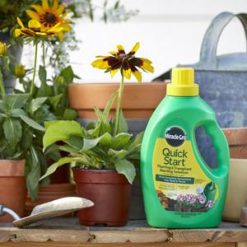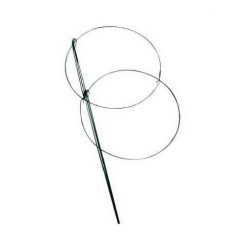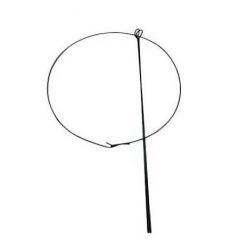As we’re heading into the highly anticipated planting season, the Helpful Gardeners wanted to send out a little PSA on the common planting errors and how to avoid them.
1. When Planting Directly into a Pot, Make Sure It Has Drainage Holes
If you’re creating annual planters this growing season, make sure your pots have drainage holes to allow excess water to escape and not breed pathogens. When planting containers, make sure to select pots that have drainage holes. Now, if you’re committed to a pot
Planters Tip: Always remember to pull the growers pot off prior to planting in a pot or garden bed. gently massage the pot to loosen it and tip the plant out. Never pull the crown of the plant as you’ll risk damaging it.
2. Use the Correct Soil for the Application
What vessel are you growing in? For container gardening, a heavy soil won’t drain properly or encourage strong root development. A top soil won’t nourish garden beds enough to promote healthy plant growth.
Garden Bed: Your main goal with garden beds is to amend the soil. Last year, your plants may have depleted the soil returning it to what we call, top soil. Yes, a fertilizer program will help to grow your plants, but there’s nothing better than an amended soil bed. Use products like compost, worm castings, volcanic mineral dust, etc.
Containers/Pots: Use a lighter medium, like a bagged potting soil because it contains peat moss or coir to allow for better drainage and pockets for root development.
3. Climatize Correctly
You know how 10 degrees can feel so different depending on if it’s spring or autumn? In the spring, we welcome it with shorts and light jackets because it’s warmer than the bitter cold of winter. In the autumn, we bring out our chunky knit sweaters and campfire blankets because it’s colder than the last few months of glorious summer. When our plants are accustomed to a pampered upbringing in greenhouses and living rooms, we need to help them transition to the great outdoors. Bring seedlings indoors during chilly nights if possible. It goes the other way too. Reduce the amount of time seedlings are in hot direct sunlight during days that are +30. Your plants will thank you!
4. Careful of the Crown! Don’t Lift Plants By They’re Stems
There’s a lot going on at the crown of the plant and it’s important that the stem stays strong and intact. Whether your transporting your plant or removing the growers pot, try not to do so by the stem. The root ball of the plant is typically heavier than the rest of it, so there’s a higher chance of disconnection when under stress.
5. Plant at the Correct Depth to Encourage Gas Exchange
To echo the previous point, there’s a lot going on at the crown of a plant. The stem assists in gas exchange, so if planted incorrectly, you run the risk of suffocating your plant. Planting depth is even important in trees despite their tough exterior. There is the crater vs volcano method with trees and shrubs. The crater method ensures soil and mulch aren’t built up around the trunk of the tree.

Now, some plants can be planted below soil level or in different mediums. For example, tomatoes have little hairs on their stem called trichomes, which have the unique ability to form roots after making contact with soil. When planting tomato plants below the soil surface, the plants growth will be stunted, but can help with staggered harvests.

6. For New Plantings – Water, Water, Water!
Transplanting creates shock in our plants so new plantings will require a bit more care while their starting out. Water is the best thing you can do to support them. For the first couple of weeks, make sure your transplants have access to lots of water. After a couple weeks, taper off to as needed. You may still need to water high production plants, like annual flowers and veggies, every day through the summer months. Perennials, trees and shrubs may take a couple days before needing moisture. Keep an eye on the weather and let your plants signal when they need you. For those plants that come back next year, their established root systems will seek water for you and they’ll need to rely on you less.
7. Don’t Overuse Fertilizer
Fertilizer can be an effective tool for plant growth, however, it can be problematic if used incorrectly. Every manufacturer of fertilizer has formulated their product to maximize plant growth. Every all-purpose fertilizer can differ in formula so it’s important to always read the packaging and use correctly. If you over fertilize, your plant may suffer fertilizer burn or accelerated growth that will result in quick decline before the growing season is over. Always follow manufacturer guidelines or dial back fertilizer strength. With that being said, you can fun your fertilizer program into the autumn for annuals flowers and veggies. Perennials, trees and shrubs should be let off their fertilizer program at the end of summer.
Planter Tip: Transplant fertilizer can be useful when transplanting perennials that are in shock. Use within the first two weeks of transplanting, but only as often as the manufacturer recommends. Don’t use is daily unless instructed to do so.
8. Give Your Plants the Correct Sun Exposure.
Who knew there would be so much reading in gardening, hey? The plant tag that come with you plant from the nursery hold a lot of helpful planting tips including correct sun exposure that will ensure your plant gets what it needs to grow successful. High productions plants, like tomatoes and geraniums wlll need lots of sun to produce flowers and fruit.
How do you figure out the types of sun exposure you have you in your yard? Start with what side it faces. A south yard will typically get more sunlight than a north facing yard. Then, split your space into sections and observe how long you get sunlight in those spaces. Take into account large trees or structures that will impact exposure. Here is a cheat sheet:
FULL SUN: 6+ hours of direct sunlight.
PART SUN: 4-6 hours of direct sunlight.
SHADE: Less than 4 hours of direct sunlight
BONUS: Plan Ahead In the Garden – Put a Ring on It
When we first get plants into their new growing environments, they look all small and clean, right? What happens when they grow into the big beautiful beings we hope they will? Think about the tools that you should install now to promote a healthy plant down the road. Peony rings and tomato cages should be installed right away to avoid piercing established roots and snapping branches later down the road.
*************************
CONNECT WITH US
Thank you so much for supporting our podcast and for making the world a more planty place. Please subscribe, leave a rating or review and listen in for new gardening discussions every week!
Subscribe to our show on Spotify, Apple, and Google
Leave an anonymous voicemail and be featured on the show!
Instagram / Facebook
Email us info@goldenacre.ca (SUBJECT: PODCAST)



















